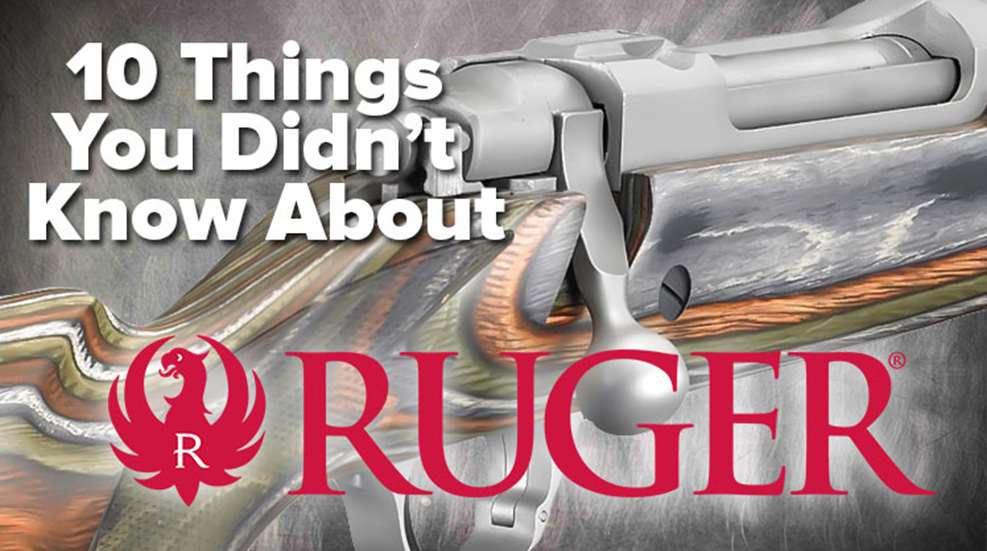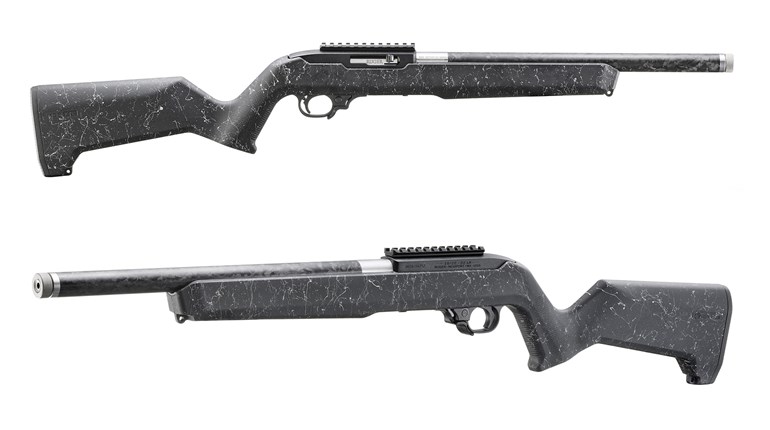
In 1945, Bill Ruger and his partner McMillan Clements opened a small factory in Southport Connecticut called the Ruger Corporation, to perform contract machining and to manufacture a line of hand tools. The Ruger Corporation would produce parts for Auto-Ordnance products, which had shifted to a post-war manufacturing market, no longer producing firearms. Later on, Bill would buy his partner Clements out.
Their factory consisted of a leased space in a complex of wooden buildings, diagonally across from the New York, New Haven & Hartford Railroad Depot. The building is known as the “Red Barn.”
From the very start, Bill Ruger envisioned producing his .22 caliber semi-automatic pistol (a pistol he designed years earlier while working for Auto-Ordnance), so he leased more than 1,500 square-feet of manufacturing space and put together a crew of skilled machinists and metal workers to set up shop for production. Much of the machinery he acquired was rather old and decrepit, but once refurbished, it was ready to go.
For any number of reasons, the Ruger Corporation had its ups and downs, and found itself treading in troubled water. By the middle of 1948, the Ruger Corporation was in debt to the tune of $40,000 plus, and the bank began initiating foreclosure proceedings that fall. But all was not lost. Bill Ruger had a new business partner. And that collaboration with a certain Alexander Sturm in 1949 would change history.
A graduate of Yale University, Alexander “Sandy” McCormick Sturm, was something of a renaissance man, as an accomplished writer, artist, actor, film maker, and lastly—and probably most importantly—a firearms enthusiast. Equally important was the fact that Sturm had the means (financially) to back a good idea. Sturm had his opportunity to invest when Bill Ruger introduced him to a .22 pistol design he made in his spare time after his machining business shut down, similar in appearance to the German Luger. Ruger was convinced it could be manufactured inexpensively, yet of a high enough quality to compete with the likes of Colt and High Standard. $50,000.00 later, Sturm, Ruger & Company was born.
As you've probably figured out, the Ruger .22 was a resounding success. Today, Ruger produces a whole line of single- and double-action revolvers, semi-auto pistols, bolt-action rifles and semi-auto rifles, and is one of the most successful firearms manufacturers in existence, building more guns than any other manufacturer.
That much, just about everyone knows. But here are 10 things you might not know about the company's history.
10. Ruger’s very own Pine Tree Casting, as Ruger’s foundry is called, was established in Newport, New Hampshire, in 1963. In the past it has produced parts for a number of different industries to include approximately 25 firearms manufacturers, rocker arms for the automotive industry, architectural hardware, prosthetics, railroad lock hardware and machine gun parts.
9. Ruger test fires every gun it makes, and the company proof tests every chamber of every single centerfire firearm produced. Proof loads are specially developed loads manufactured by a number of ammunition companies that are a fixed percentage higher in pressure than the SAAMI maximum pressure of any given cartridge. They are designed to test the strength of a firearm, with a known pressure level. The proof loads Ruger uses are standard proof loads of 50 percent over SAAMI maximum pressure. Do the math: if a .454 Casull has a SAAMI specified maximum pressure of 65,000 psi, the proof loads must generate roughly 92,000 psi of revolver destroying pressure. Each and every Ruger revolver is fed a cylinder full of proof loads as part of the inspection/testing process, before the revolver is cleaned and boxed up for retail.
8. Bill Ruger once said: “A Harvard Business School graduate will never run this company!” Ironically, the Harvard Business School used Sturm, Ruger & Company as a model case study for many years. Also, Mike Fifer, the current CEO, is a Harvard Business School graduate, and the company is now more profitable than ever.
7. Ruger produces its own hammer-forged barrels. A mandrel with the correct rifling and the exact dimensions of the barrel is inserted into a barrel blank. The mandrel is fed into the portion that is being pounded with anywhere from 80 to 140 tons of force, depending on the machine and the application. The 140-ton barrel machine produces 1,200 hammer strokes per minute! The entire rifling process takes about 2½ minutes to complete, and then the barrels are cut to the required length.
6. When Bill Ruger informed then-President Ronald Reagan that he had presented the exiting President Jimmy Carter with a Ruger shotgun, not missing a beat President Reagan replied, “Oh! I didn’t know he could shoot!”
5. Sturm, Ruger & Company employs more than 2,000 people nationwide, with factories in Prescott, Arizona, Newport, New Hampshire and Mayodan, North Carolina.
4. The somewhat obscure .480 Ruger revolver cartridge is the first cartridge to bear the Ruger name.
3. The inventor of the AR-15, Eugene Stoner, while working as the chief engineer at ArmaLite, purportedly offered the rights to manufacture the AR-15 to Ruger. Apparently Ruger was not interested, however, Colt was. The rest, as they say, is history.
2. Ruger produced the Great Big Bertha titanium golf clubs for Callaway in the 1990s. Some are actually marked “Ruger Titanium.”
1. Bill Ruger, Sr. was quoted as saying: “It’s not the man who designs of makes the guns that is the true genius. It’s the man who makes the machines which make the guns that is the true hero of this business.”





































